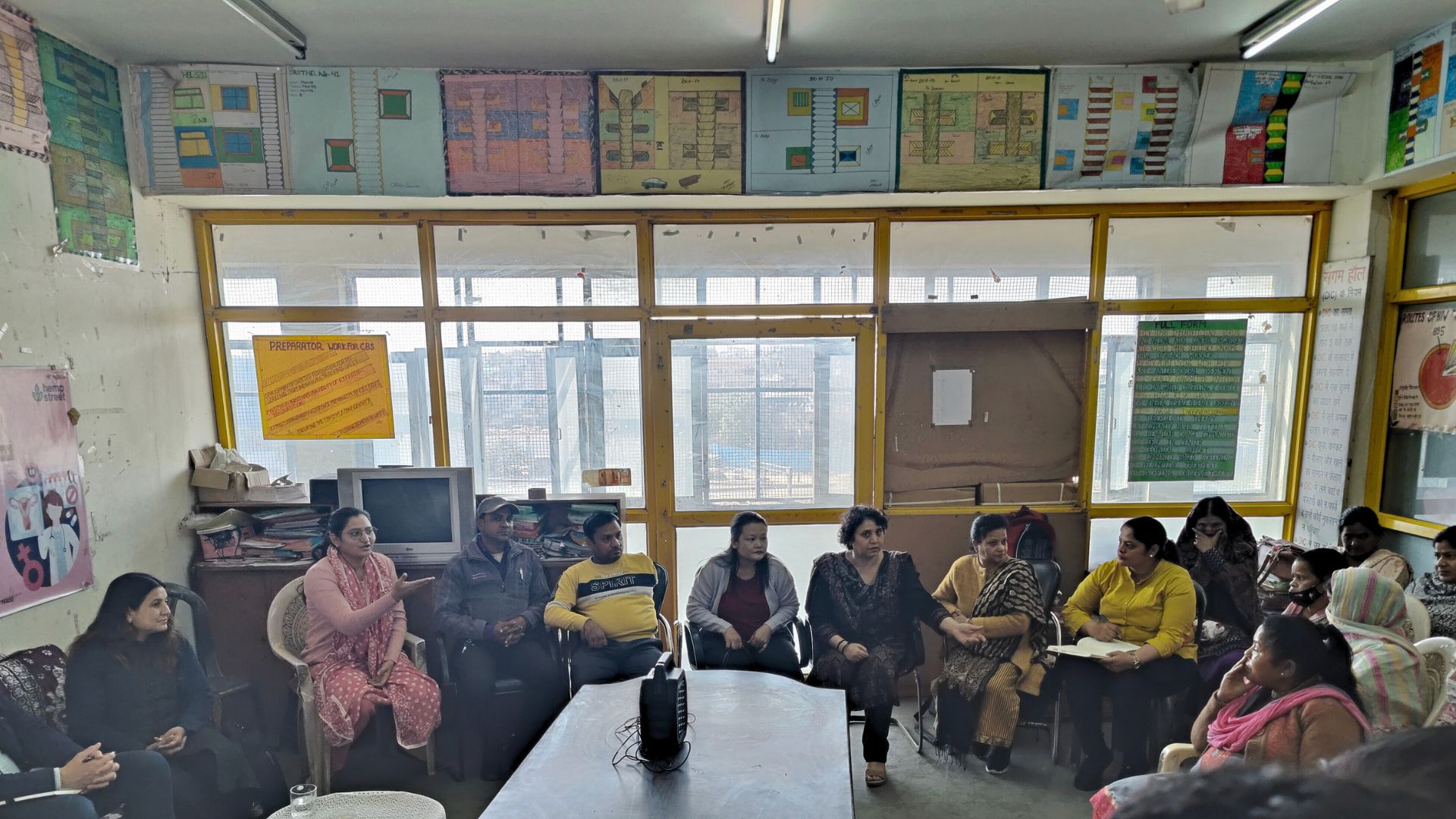USAID and NACO make HIV care accessible to marginalized sections through a community-led monitoring program.
August 2023

USAID and NACO’s community-led monitoring program offers people an opportunity to participate in creating frameworks for better uptake of HIV services among marginalized sections. (Photograph courtesy Rita Prasad)
When HIV services—like prevention, testing and treatment—remain inaccessible to some sections despite sustained efforts, a monitoring program can help identify barriers and implement solutions more effectively. The U.S. Agency for International Development (USAID), along with India’s National AIDS Control Organization (NACO) and other stakeholders, has initiated one such community-led monitoring program. Implemented by Sattva Consulting, the program is designed to understand the enablers and barriers toward the uptake of HIV services and improve outcomes, especially among key populations. Pilot initiatives have been launched in New Delhi, Maharashtra and Telangana.
For the people, by the people
The monitoring programs aim to engage the community, and co-create frameworks to improve services and patient experiences. “The populations we work with are extremely marginalized,” explains Rita Prasad, a technical advisor for HIV at USAID/India. “They face structural barriers in terms of socioeconomic and cultural contexts, stigma and discrimination. All these negatively influence their health outcomes. There is a need to make the HIV services friendly and accessible to the communities as per their needs.”
The community-led monitoring programs offer communities an opportunity to participate, instead of being passive recipients. Prasad says these programs are initiated, led and implemented by local organizations, civil society groups, people living with HIV and affected groups. They gather data about HIV services, and develop and advocate for solutions to the gaps identified during data collection. “The key point is addressing local problems with local solutions,” says Prasad.
Overcoming barriers
Community-led monitoring has helped change attitudes and initiate dialogues between communities and service providers, says Prasad. “We have had multiple successes on the field where communities have cited that the attitude of service providers has improved and there have been positive dialogues through which local issues, like non-availability condoms or treatment kits for sexually transmitted illnesses, have been resolved,” she says.
Kim Hauzel, project lead from Sattva Consulting, says the pilot programs in New Delhi, Maharashtra and Telangana have helped understand how stigma and discrimination might prevent people from seeking HIV-related care. Sattva’s implementing partner Swasti, a health care organization, carried out three rounds of community-led monitoring in the three states, under which 475 community champions were trained, 13,000 persons with HIV were interviewed on the National AIDS Control Programme guidelines, and identified 1,100 action points based on the service beneficiaries’ feedback. Of these, 72 percent action points were resolved at the local level, and 84 best service providers were identified for their extraordinary work to provide quality service to program participants. “Through community-led monitoring, the community champions worked collaboratively across HIV prevention, care and treatment, and TB programs,” says Kim Hauzel.
Natasa Milas is a freelance writer based in New York City.
Click here to sign up for the free SPAN newsletter: https://bit.ly/SubscribeSPAN
COMMENTS